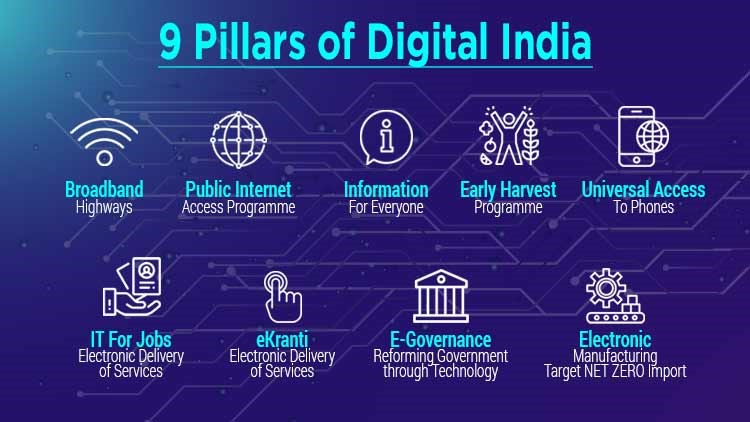
India’s journey towards digital inclusion has gained significant momentum, thanks to a combination of government initiatives and the availability of affordable devices. These factors have played a crucial role in bridging the digital divide and empowering millions of Indians with access to digital technologies and opportunities.
The Indian government has taken proactive measures to ensure digital inclusion reaches every corner of the country. One of the key initiatives is the Digital India campaign, launched in 2015, which aims to transform India into a digitally empowered society and knowledge economy. This ambitious program encompasses various schemes and projects that focus on improving connectivity, digital infrastructure, digital literacy, and e-governance services.
Under the Digital India campaign, the government has implemented initiatives like BharatNet, which aims to provide broadband connectivity to all gram panchayats (village-level administrative units) in the country. This project has significantly expanded internet access, particularly in rural areas, enabling individuals and businesses to participate in the digital economy.
The Affordable Devices Initiative is another crucial aspect of India’s digital inclusion efforts. Recognizing that access to affordable devices is a key barrier, both the government and private sector have worked towards making devices more accessible to a wider population. The introduction of budget-friendly smartphones, along with affordable data plans, has played a pivotal role in bringing digital services within reach of millions of Indians.
Additionally, the government has implemented various programs to enhance digital literacy. Initiatives like Pradhan Mantri Gramin Digital Saksharta Abhiyan (PMGDISHA) and National Digital Literacy Mission (NDLM) have been instrumental in imparting digital skills and knowledge to individuals across the country. These programs have focused on training people in digital tools and technologies, enabling them to leverage the benefits of the digital era.
The impact of these initiatives is evident in the significant progress India has made in digital inclusion. The number of internet users in the country has skyrocketed, with increased smartphone penetration and improved connectivity. Digital services, ranging from e-commerce to digital payments, have become more accessible and widely used.
The advantages of digital inclusion are multifaceted. It empowers individuals by providing access to education, healthcare information, government services, and financial services. It also opens up new opportunities for entrepreneurship, employment, and economic growth. Furthermore, digital inclusion plays a crucial role in reducing social and economic disparities by ensuring that marginalized communities have equal access to resources and opportunities.
While commendable progress has been made, challenges still exist in achieving comprehensive digital inclusion. Some areas continue to face connectivity issues, and there is a need to strengthen digital infrastructure in remote regions. Additionally, digital literacy needs to be further emphasized to maximize the benefits of digital technologies.
In conclusion, India’s journey towards digital inclusion has been accelerated by government initiatives and the availability of affordable devices. The Digital India campaign, coupled with efforts to improve connectivity and digital literacy, has paved the way for millions of Indians to embrace the digital era. As digital inclusion continues to unfold, it is crucial to address remaining challenges and ensure that all segments of society can harness the transformative power of technology for their socio-economic growth and well-being.

